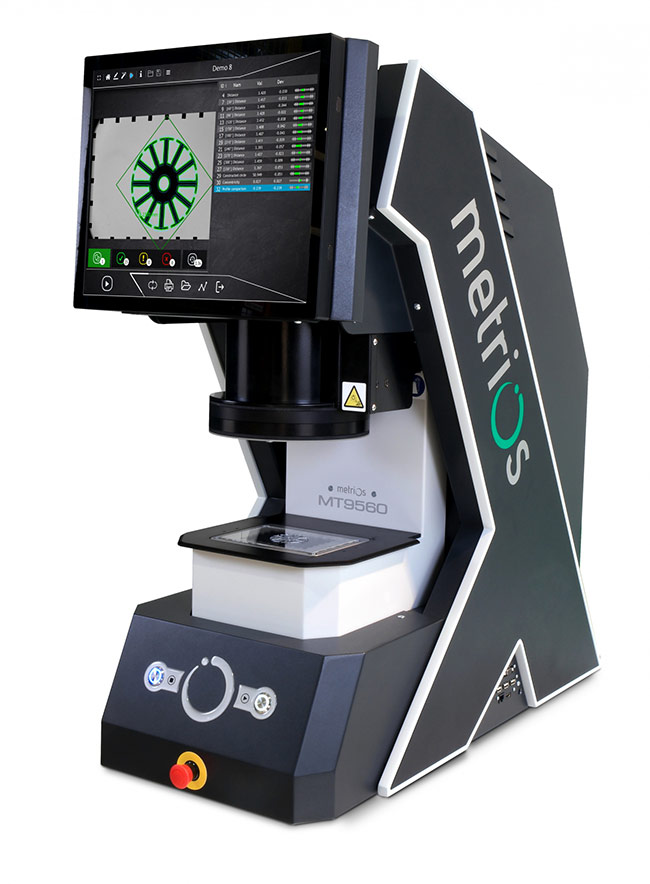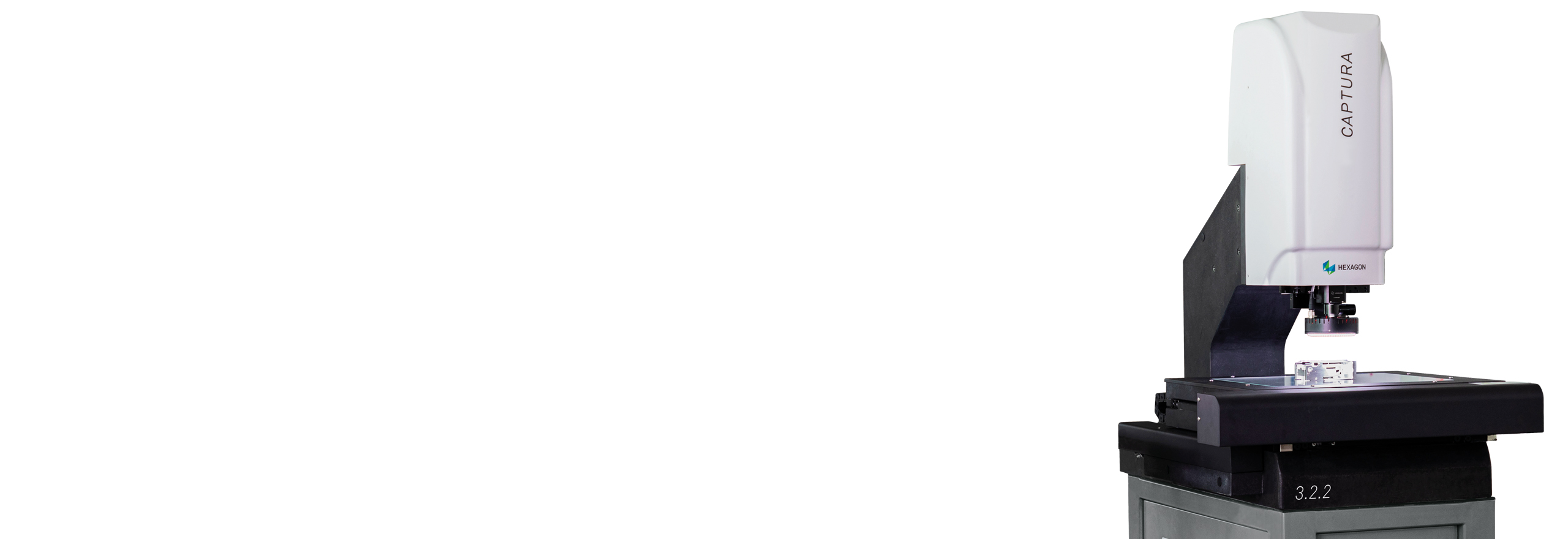Why optical measurement system integration leads to lower defect rates
Why optical measurement system integration leads to lower defect rates
Blog Article
The Function of Optical Dimension Equipments in Advancing Width Methods
Optical measurement systems have changed width, bringing a degree of accuracy that was once unbelievable. You could be amazed to discover just how these technologies, based upon essential concepts like representation and disturbance, are applied throughout various sectors. Their non-contact capacities not only enhance precision but also simplify processes. As you check out even more, you'll uncover just how these systems are shaping the future of measurement and quality assurance.
The Advancement of Assessment: A Historical Perspective
As you check out the background of metrology, you'll discover that its development mirrors humankind's quest for precision and standardization. From ancient people utilizing body parts as devices of dimension to the advancement of standard weights and procedures, each step reveals our need for accuracy. The Egyptians constructed the pyramids using exact measurements, while the Romans progressed engineering with their sophisticated measuring devices.
Throughout the Renaissance, clinical breakthroughs moved the emphasis towards more empirical techniques, leading the way for modern assessment. The intro of the statistics system in the late 18th century noted a substantial landmark, developing global standards. Throughout the 20th century, technological advancements further changed metrology, allowing highly accurate measurements in various areas.
Today, width remains to progress, integrating electronic innovation and automation. This background highlights not just the significance of dimension however also our ruthless search of boosting accuracy and consistency in our progressively intricate world.
Concepts of Optical Measurement Equipments
Comprehending the principles behind optical measurement systems is necessary for accurate outcomes in width. You'll wish to consider essential optical concepts, measurement precision elements, and reliable system calibration methods. Each of these aspects plays a vital duty in guaranteeing your measurements are accurate and dependable.
Fundamental Optical Principles
While discovering optical dimension systems, you'll experience basic optical principles that form the backbone of accurate information purchase. Light behaves in foreseeable methods, and understanding these actions-- like diffraction, reflection, and refraction-- is crucial for effective measurements. You'll utilize lenses and mirrors to adjust light and focus it onto your target, making certain accuracy in your readings. In addition, the wave nature of light enables interference patterns, which can boost dimension resolution. Polarization can also play an essential role in distinguishing signal from sound, improving the quality of your results. By grasping these concepts, you'll be outfitted to take advantage of optical technologies properly, paving the means for developments in width and ensuring your dimensions are both repeatable and reputable.
Dimension Precision Elements
To accomplish high dimension precision in optical systems, numerous factors enter into play, influencing the integrity of your outcomes. The quality of the optical elements matters greatly. High-grade lenses and detectors reduce aberrations and sound, ensuring your dimensions are precise. Second, environmental conditions like temperature level and moisture can impact dimensions, so preserving a steady setting is vital. Third, the positioning of the optical system is essential; even small imbalances can cause considerable mistakes. Ultimately, the wavelength of light utilized influences the resolution and accuracy of your measurements. By addressing these elements, you can improve the general performance of your optical measurement systems, bring about more trustworthy and accurate outcomes in your assessment applications.
System Calibration Strategies
Attaining high dimension precision is only part of the formula; appropriate system calibration techniques are similarly vital in optical dimension systems. Next, utilize recognized measurements to validate the system's outcome and make necessary modifications. With these strategies, you'll boost the reliability of your optical measurement system.
Trick Technologies Behind Optical Dimension
Optical measurement systems depend on numerous vital innovations that boost precision and performance in width. One essential innovation is interferometry, which utilizes the disturbance of light waves to determine tiny displacements and surface area irregularities with severe accuracy. You'll likewise locate laser scanning systems, which catch detailed 3D information of things quickly, making them important for dimensional evaluation.
In Addition, CCD and CMOS sensing units play a substantial duty in transforming light into electrical signals, permitting high-resolution imaging and accurate measurements. Advanced algorithms for image processing even more boost dimension accuracy by evaluating information in actual time, removing sound and improving functions.
Lastly, optical fiber provide versatility and the capacity to measure in challenging settings while maintaining signal integrity. By leveraging these technologies, you can attain premium cause your metrology tasks, making certain that your dimensions are both precise and reliable.
Applications of Optical Measurement in Industry
As markets increasingly demand accuracy and performance, the applications of optical measurement systems have ended up being essential across different markets. In manufacturing, these systems help you monitor measurements and tolerances in real-time, ensuring quality assurance without lengthy hands-on checks. In the auto industry, optical measurements help in straightening elements with precision, improving security and performance.
In electronic devices, you're using optical methods to check min features on motherboard, discovering issues that can cause failures. The aerospace field take advantage of non-destructive testing strategies, enabling you to examine products and elements without jeopardizing their honesty.
Optical dimension also plays a vital function in textiles, making certain fabric dimensions satisfy exact specs. optical measurement system. With their ability to provide high-resolution information quickly, these systems encourage you to make informed decisions, streamline procedures, and inevitably drive development across your market
Enhancing Accuracy and Performance in Measurements
When you consider enhancing accuracy in measurements, precision in your dimension methods is vital. By enhancing these processes, you can achieve quicker results without compromising quality. Let's explore exactly how embracing advanced optical dimension systems can boost both precision and effectiveness in your job.
Accuracy in Dimension Methods
Accuracy in dimension methods is essential for accomplishing trusted results in assessment, especially because tiny disparities can lead to substantial mistakes. By making use of innovative optical dimension systems, you can boost the accuracy of your dimensions. In enhancement, exact dimensions enable you to preserve high quality control, ensuring that items satisfy stringent specifications.
Streamlining Measurement Processes
To improve precision and effectiveness in measurements, simplifying your measurement processes is important. Start by adopting optical dimension systems that offer real-time data, lowering the moment spent on hand-operated recording. These systems often integrate seamlessly with read what he said existing software, permitting you to automate information collection and analysis.
Next, standardize your measurement procedures. By applying consistent procedures, you lessen irregularity and boost repeatability. Don't fail to remember to routinely calibrate your tools to guarantee its accuracy.

The Impact of Optical Dimension on R & D
As researchers undertaking to push the limits of technology, optical measurement systems have become important devices in the advancement procedure. These systems provide you with specific, real-time data that enhances your capacity to analyze complex products and structures. In different fields, click here to read from biotechnology to aerospace, you depend on optical dimensions to optimize styles and boost product performance.

With high-resolution imaging and non-contact approaches, you can lessen example disruption, permitting for even more precise outcomes. This capacity to capture minute information increases your R&D cycle, allowing you iterate designs swiftly and efficiently. Optical measurement promotes collaboration across disciplines, as the data created is typically conveniently interpretable and shareable.
Inevitably, incorporating optical measurement systems into your research not only improves efficiency however likewise strengthens your understanding of the phenomena you research. By leveraging these innovative methods, you're far better geared up to introduce and remain in advance in a competitive landscape.
Future Fads in Optical Dimension Systems
With the rapid improvement of modern technology, you're likely to see considerable changes in optical dimension systems that will redefine their application throughout various sectors. You'll see a relocation towards boosted automation and integration of expert system, allowing for real-time data analysis and enhanced accuracy. Miniaturization is another trend; compact gadgets will enable measurements in tighter rooms, making them optimal for fields like aerospace and biomedical applications.
Anticipate to see systems that can run in tough settings, offering reliable dimensions in extreme conditions. As these innovations converge, you'll find that optical dimension systems not only enhance accuracy yet also enhance process, ultimately driving advancement and performance in your jobs.
Regularly Asked Inquiries
How Do Optical Dimension Equipments Contrast to Typical Measurement Techniques?
Optical measurement systems offer higher precision and faster results compared to standard strategies. You'll locate they catch more data points properly, minimizing human mistake and increasing integrity, making them a recommended choice in different applications.
What Industries Benefit Most From Optical Dimension Equipments?
You'll locate sectors such as aerospace, automotive, and electronics benefit most from optical dimension systems. These fields rely on exact dimensions to assure top quality and performance, boosting performance and decreasing prices via sophisticated modern technology.

Are Optical Measurement Solutions Expensive to Implement?
Optical dimension systems can be expensive to execute, however their accuracy and performance frequently validate the cost. Purchasing such innovation can bring about significant long-lasting cost savings and enhancements in high quality across numerous applications.
What Skills Are Needed to Run Optical Measurement Equipments?
To operate optical dimension systems, you'll require solid logical skills, attention to detail, and proficiency in software devices. Knowledge with optics and an understanding of dimension principles will certainly also boost your effectiveness and performance.
Just How Do Ecological Variables Affect Optical Measurements?
Ecological aspects like temperature level, air, and moisture top quality can distort optical dimensions. You'll notice variants in precision because of light interference or refraction. optical measurement system. Preserving steady problems is necessary for trustworthy and exact optical dimension results
Conclusion
In summary, optical dimension systems are transforming metrology by providing unmatched precision and efficiency. As you discover future fads, you'll see just how the integration of AI and automation will certainly proceed to elevate measurement practices, driving development and enhancing top quality control.
Achieving high measurement precision is just part of the equation; proper system calibration strategies are similarly vital in optical dimension systems.When you believe about boosting precision in measurements, precision in your measurement methods is important. By making use of sophisticated optical measurement systems, why not try this out you can improve the accuracy of your dimensions.To enhance precision and efficiency in measurements, simplifying your dimension processes is necessary. Exactly How Do Optical Measurement Systems Compare to Typical Dimension Techniques?
Report this page